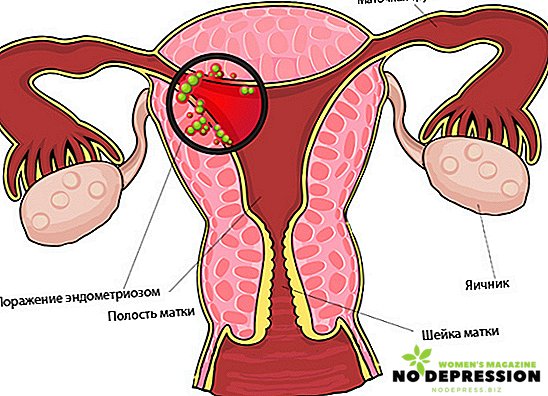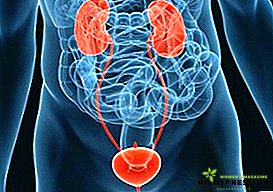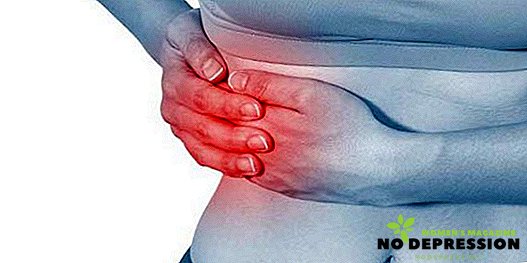There are many gynecological diseases that can knock a woman out of a rut. One such insidious disease is endometriosis. Therefore, it is important to know what it is, what the symptoms are and how the treatment goes.

Forms of endometriosis
To date, the disease is very common, which in the absence of timely treatment can cause serious complications. Therefore, you need to understand what constitutes endometriosis and how it manifests itself.
Endometriosis is a chronic proliferation of glandular tissue (endometrium), which normally covers only the surface of the uterus. When endometriosis begins to spread to other organs.
In practice, the following forms occur:
- Extragenital, in which endometriotic tissue grows not only on organs in the abdominal cavity, but also outside, for example, on the lungs.
- Combined form in which the placement of tissues is localized both on the internal organs and on the genitals.
Also found genital endometriosis, in which there are:
- internal adenomyosis - nodular seals appear in the muscular layer of the uterus, on the ovaries;
- external, when the vagina and peritoneum of the small pelvis are affected.

Main stages of pathology
Most often, doctors are faced with adenomyosis, that is, endometriotic disease has an internal genital form.
Usually, women learn about the diagnosis when they go to the doctor with such a problem as too heavy periods.
Depending on the nature of cell localization, the following types of such diseases are distinguished: focal, diffuse or nodular. In order to choose the right treatment regimen and when conducting diagnostics, physicians pay special attention to the disease stages:
- Stage 1 In this case, the surface layer grows into the basal.
- In the second stage, the muscular layer of the uterus is almost half affected.
- Stage 3 is characterized by a defeat serous cover.
- In the fourth stage, foci of pathology spread to the peritoneum.
Causes of endometriosis of the uterus
Everyone knows - many diseases can be avoided if you try to exclude provocative factors. However, it does not work with this pathology, because until now doctors cannot determine its exact cause. There are the following theories of the appearance of endometriosis of the uterus:
 hormonal disruptions;
hormonal disruptions;- genetic predisposition;
- problems with immunity, when the body can not determine the wrong location of cells and does not fight them;
- defects that appeared in the prenatal period;
- damage to the mucous membrane during medical procedures;
- inflammatory process in the organs of the urogenital system;
- mismatched birth control drugs.
But there are also a number of provoking factors, which include:
- age over 35 years;
- poor environmental conditions;
- multiple births;
- constant stress;
- chronic diseases of internal organs;
- severe physical exhaustion;
- smoking, alcohol.
The peak incidence is noted at the age of 25-40 years, but there are cases of the occurrence of the disease in adolescents. After menopause, the disease most often undergoes regression and tends to self-destruct, due to changes in hormonal levels.
What signs may indicate a disease?
 It is rather difficult to recognize this disease, especially in the early stages, because it is so important to visit the gynecologist at least once every six months.
It is rather difficult to recognize this disease, especially in the early stages, because it is so important to visit the gynecologist at least once every six months.
But you should also consult a doctor if you have symptoms such as: pain during sexual intercourse, weakness, dizziness, an increased amount of discharge during menstruation, lower abdominal pain during menstruation, an increase in body temperature during menstruation.
It should be noted that such symptoms are characteristic of many other gynecological diseases, for example, endometrial hyperplasia. To distinguish between these diseases, you need to undergo a thorough examination.
Diagnosis and treatment
To confirm or refute the diagnosis, it is necessary to conduct instrumental, as well as laboratory research methods. In some cases, colposcopy helps, but the most effective way is transvaginal ultrasound, which not only allows you to see the condition of the mucosa, but also helps to detect other possible pathologies, such as hypotrophy or hypoplasia.
Also, some forms of the disease can be detected during hysteroscopy - examination of the uterine cavity using a special tool. Laparoscopy will also be effective, during which not only the examination of the pelvic cavity is carried out - the doctor can cauterize the foci of endometriosis. Most likely, the patient will need to be tested for hormones.
The following treatment methods are used:
- Conservative, in which long-term administration of hormonal drugs, such as Jeanine or Duphaston, is prescribed.
- Additionally, anti-inflammatory or analgesic drugs may be prescribed to alleviate the associated symptoms.
- Assigned to use a laser or microwaves to destroy the mucous layer of the uterus.
- Electrocoagulation - cauterization of the affected lesions with electric shock.
- Surgery in which the outbreaks of growth of the mucous are removed.

With the defeat of the cervix using methods such as laser coagulation and cryotherapy, which allow us to give 90% guarantee that the disease will not return. At the same time, after any surgery, hormone therapy should be carried out.
Traditional methods of treatment
For the treatment of this disease, many women use folk methods. It is important to remember that you can not use these tools without consulting your doctor.
In practice, the uterus is most commonly used for treatment.
Here are some simple recipes:
- Pour 2 tbsp. dried grass 500 ml of vodka, leave to infuse for two weeks. Take the tincture three times a day, 30 ml before meals, and you need to dilute it with a small amount of water.
- Take 2 tbsp. dry boron uterus, add 1 tbsp. vegetable oil. Leave to infuse for two weeks in a dark place, strain. As part of the need to moisten the swab and enter it into the vagina every night.
What is the danger of pathology
In no case should the disease be allowed to drift, as this can cause serious consequences and complications. For example, doctors managed to prove that the development of endometriosis can cause infertility, because women who decide to give birth should definitely treat this disease.
In addition, an endometrioid cyst on the ovaries can be a reason for the removal of appendages. If the disease occurs with uterine myoma, this combination can lead to the complete removal of the organ.
Prevention
For the prevention of endometriosis, it is necessary to visit the gynecologist twice a year, especially if the woman has not given birth, since practice shows that most often this pathology develops in the childbearing age, and during menopause the likelihood of onset decreases.
Also, be sure to consult your doctor if the menstrual cycle is delayed, since this problem may indicate violations of the ovaries, which can lead to this disease. We should not ignore these symptoms and take medications without the knowledge of the doctor - only a gynecologist, after conducting all the research and making a diagnosis, can begin treatment.


 hormonal disruptions;
hormonal disruptions;









